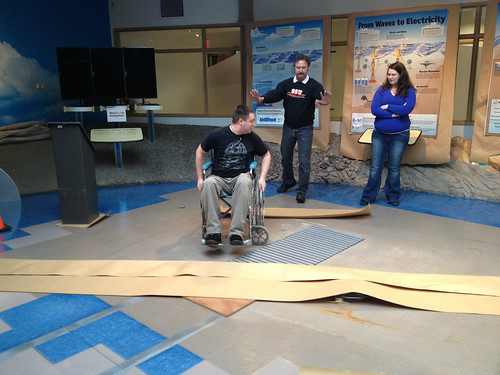
We received a very informative site evaluation from a surveillance camera expert today. Among other things, we learned that we don’t need pan-tilt-zoom functionality for most of our applications. With some clever placement, our exhibit space may not be as difficult to capture as we previously thought.
One problem—from the perspective of face detection and recognition—is the fact that many exhibits are along the walls of the Visitor Center. This is a common feature of many museums, but it means that simply throwing a camera into a convenient corner might be ineffective unless we acquire software to recognize back-of-head expressions. Our other exhibits, such as the touch pool and large display tanks, could block our view of visitors from several angles. These inherent problems can be circumvented with careful camera placement and a front-door camera to register each visitor upon entry. It certainly helps to bring in the professionals for this sort of thing.
Our Octocam – the underwater web cam in our Giant Pacific Octopus tank – has gone through various iterations as they serially succumb to seawater exposure. Our current camera is not adequate in image or tank stability. We spent some time today experimenting with a new camera mounted outside the tank, and it actually works just as well as a submersible camera. Naturally, an external camera would also eliminate concerns about maintenance, housing integrity, running electrical and ethernet cables underwater and the fact that metal is toxic to octopuses should a waterproof component fail. The camera will still be exposed to occasional bumping and climbing, albeit by creatures of a different phylum.




